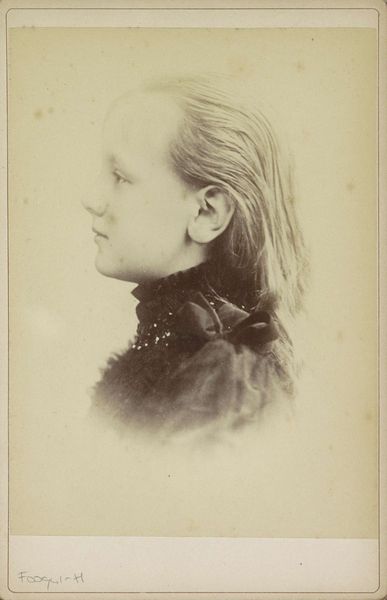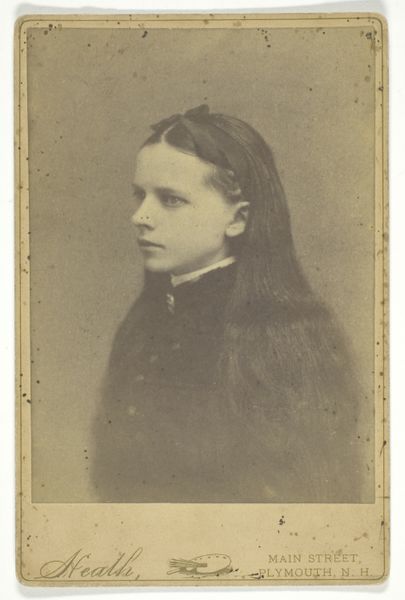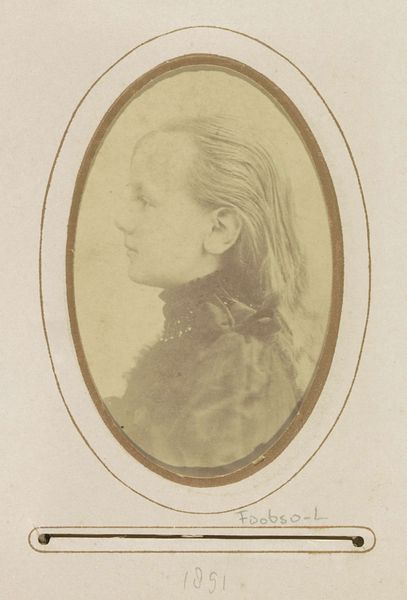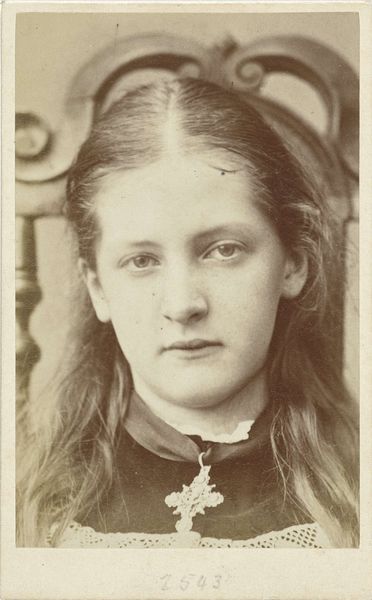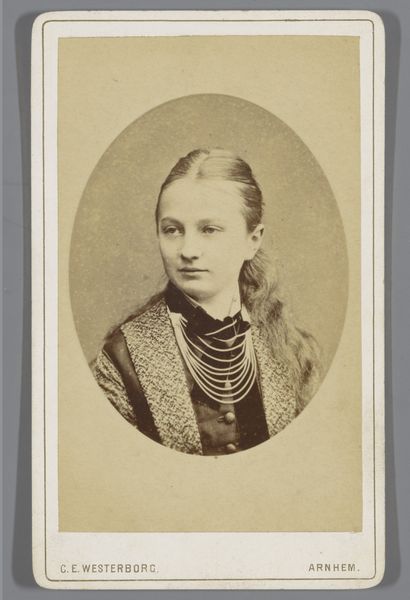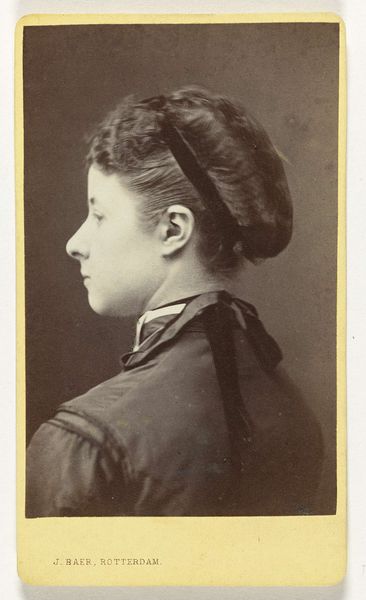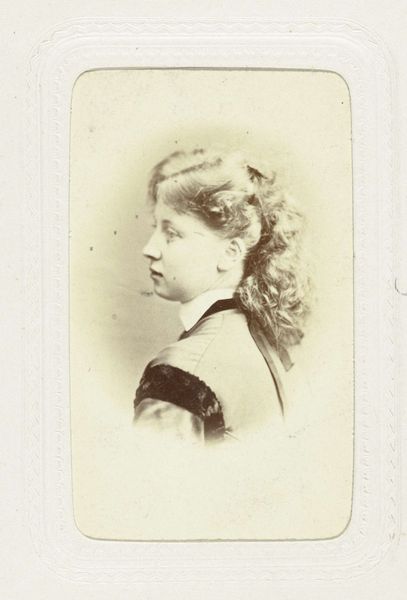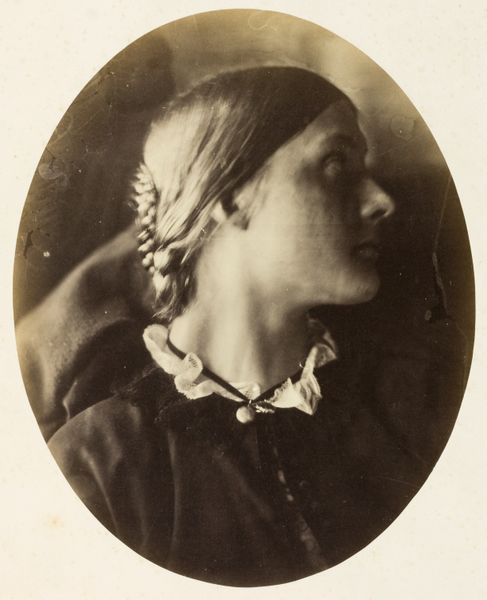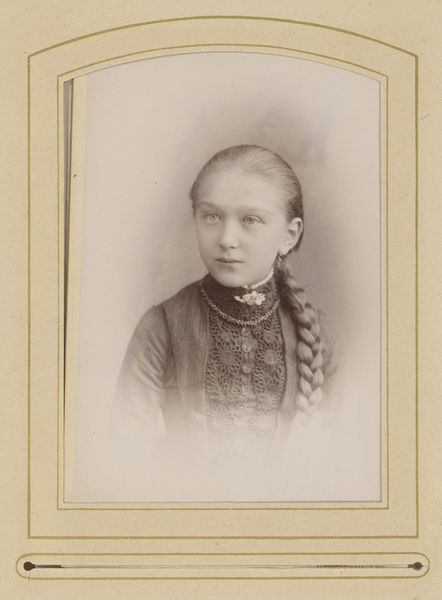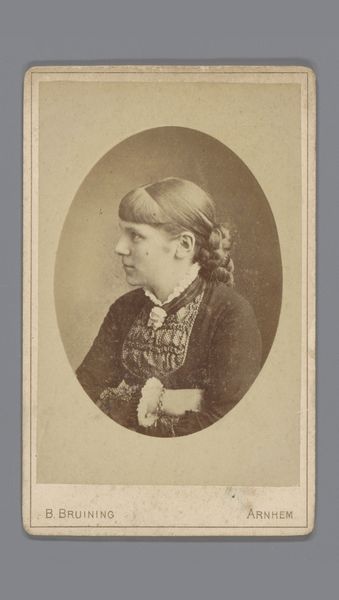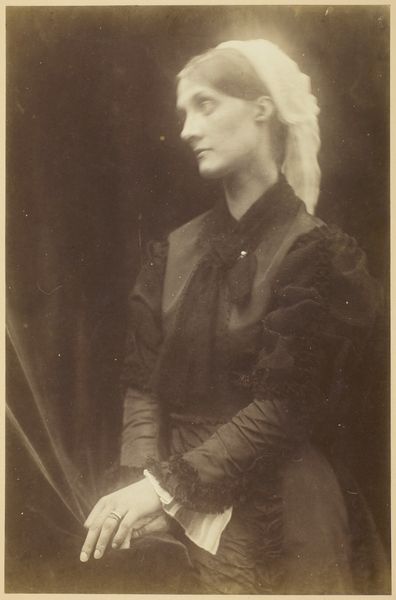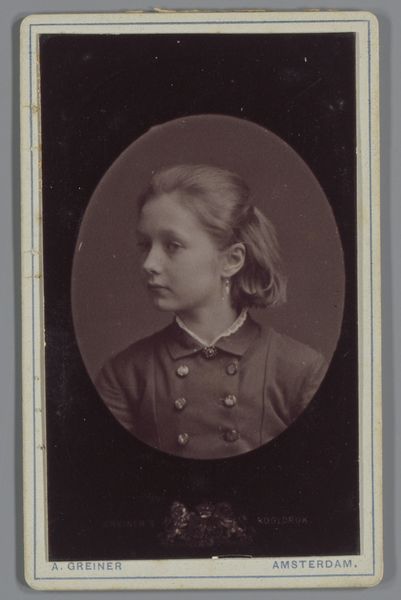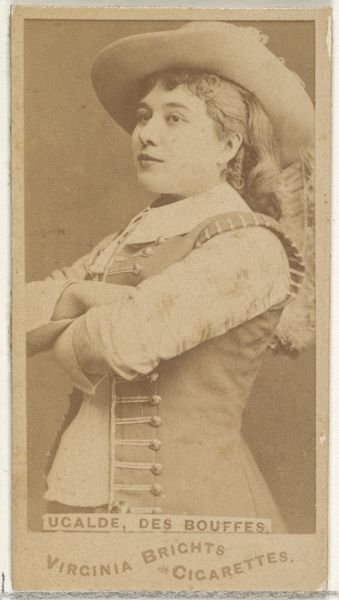
Portret van Wilhelmina, koningin der Nederlanden, in rouwkleding Possibly 1891 - 1893
0:00
0:00
paper, photography
#
portrait
#
paper
#
photography
#
historical photography
Dimensions: height 136 mm, width 96 mm, height 163 mm, width 106 mm
Copyright: Rijks Museum: Open Domain
Editor: Here we have Adolphe Zimmermans' "Portret van Wilhelmina, koningin der Nederlanden, in rouwkleding," a photographic portrait from possibly 1891 to 1893. It’s on paper, a very intimate profile view. What can you tell me about it? Curator: Focusing on its materiality, it’s crucial to acknowledge the process behind this image. A photographic portrait wasn't just a click of a button back then. There were layers of labor, from the photographer’s expertise and the studio setting to the preparation of the photographic paper and the chemicals involved. The act of memorializing royalty through reproducible images was also an interesting social commentary on visibility, class, and representation. What do you think about the photographic process itself? Editor: It seems much more… deliberate? Less spontaneous, with greater investment. This must have also influenced who and what got photographed. Curator: Precisely! Photography shifted from exclusive luxury to accessible commodity over time, altering societal perspectives on who and what merited documentation. Look at the deliberate crafting of her image, down to the mourning clothes – that's powerful messaging about succession and responsibility. Consider the context: was the attire specifically ordered? What sort of resources and labor does it entail? Editor: So, viewing it materialistically encourages us to think beyond just the artistic merit of the portrait, and consider the societal implications and the manufacturing surrounding the creation of this portrait? Curator: Exactly. The very act of reproduction, indicated by "REPRODUCTIE" at the bottom, challenges our understanding of value and authenticity. Was this mass-produced, or limited edition? How did this affect its reception at the time? Editor: I hadn't thought about that aspect of reproduction. It gives a completely new perspective! Thanks for highlighting that. Curator: It’s all about examining the labor, resources, and power structures inherent in art production.
Comments
No comments
Be the first to comment and join the conversation on the ultimate creative platform.
